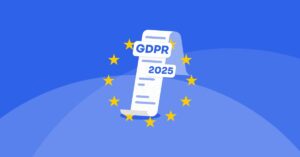Introduction
Data is everywhere in today’s world. Organizations collect vast amounts of data, including sensitive information such as names, addresses, social security numbers, and medical records. This data is often used for analysis and reporting, but it also poses a significant risk to privacy and security. Data anonymization is the process of removing or obscuring personal information from data sets to protect the privacy of data subjects. In this article, we will explore the what, why, and how of data anonymization and its importance in various use cases.
Data Anonymization
Data anonymization is a method of protecting or encoding identifiers that link individuals and their data. Anonymized data sets do not contain personally identifiable information (PII), such as names, addresses, social security numbers, or other private identifiers. Instead, anonymized data sets contain only non-identifiable data that can be used for analysis and reporting without compromising the privacy of data subjects.
Why do I need Data Anonymization?
Data anonymization is necessary to protect data subjects’ privacy and ensure data sets’ accuracy and reliability. Anonymized data sets allow organizations to conduct analysis and reporting without compromising the privacy of data subjects. Anonymized data sets also protect against the possible loss of market share and trust due to data breaches and other security incidents.
Some data may still require anonymization. As data grows in volume, almost every company is expected to undergo compliance measures and regulations regarding sensitive data. Protected health information (PHI) includes health records, laboratory reports, and medical bills. Obviously, this is far beyond personal information.
Data Anonymization use cases
Data anonymization is used in various industries, including healthcare, insurance, finance, and retail. Let’s explore some of the top use cases of data anonymization:
Medical research:
Medical researchers rely on access to large data sets to develop new treatments and identify trends in patient outcomes. However, medical data is highly sensitive, and patient privacy must be protected. Anonymized data sets allow medical researchers to conduct research while protecting patient privacy.
Insurance claims:
Insurance companies collect large amounts of data on policyholders, including personal information such as names, addresses, and social security numbers. Anonymized data sets allow insurance companies to analyze claims data to identify trends in claims, improve underwriting processes, and detect fraudulent claims without compromising policyholder privacy.
Customer data analysis:
Companies collect vast amounts of customer data, including purchase history, demographic information, and personal preferences. Anonymized data sets allow companies to analyze customer data to improve product offerings, identify trends in customer behavior, and develop targeted marketing campaigns without compromising customer privacy.
Financial data analysis:
Financial institutions collect large amounts of data on customer transactions, including personal information such as names, addresses, and social security numbers. Anonymized data sets allow financial institutions to analyze transaction data to identify trends in customer behavior, detect fraudulent transactions, and develop targeted marketing campaigns without compromising customer privacy.

What data should be anonymized?
Data that should be anonymized includes any sensitive information that can be used to identify data subjects, including names, addresses, social security numbers, medical records, and other private identifiers. Data controllers should also consider the potential for data re-identification when determining which data elements to anonymize. Re-identification occurs when an anonymous data set is combined with other data sources to identify individual data subjects.
Not every dataset has been anonymized. Database administrators should determine which data should remain anonymous and which may still contain data. Selecting a data set for anonymization may appear simple. The notion that “sensitive information” is subjective varies depending upon the individual. In the past, contacts have been considered inadequate for a marketing agency’s managers. Most compliance standards and policies agree that personal identifiable information is deemed to have the highest security value when storing it securely.
6 Data Anonymization techniques
Several data anonymization techniques can be used to anonymize sensitive data. These techniques include:
Data generalization: replaces specific data values with general data values to reduce the precision of data sets.
Data generalization is a data anonymization technique that replaces specific data values with general data values to reduce the precision of data sets. This technique involves grouping similar data values into general categories to reduce the granularity of the data set.
Data masking: obscures specific data values to prevent unauthorized access to sensitive data.
A data mask involves revealing information about modified values. Data anonymization occurs in the process of building a mirror image on a database and employ alterations techniques such as character switching, encryption, terms, and substitution. In particular, a value character can be replaced with symbols like “*” or “x”. This is very hard to identify the reverse engineer to use.
Data pseudonymization: replaces private identifiers with fake identifiers to protect the privacy of data subjects.
Unlike data generalization, which replaces specific data values with general data values, data pseudonymization replaces private identifiers with fictitious identifiers. Data pseudonymization is an effective technique for protecting sensitive data and ensuring data privacy. By replacing private identifiers with fake identifiers, data sets become less identifiable, making it more challenging for unauthorized parties to re-identify the data subjects.
Data swapping or data shuffling: rearranges dataset attribute values to make it less identifiable.
Data swapping or data shuffling replaces underlying data with attribute values not aligned to the original data. A case of data permutation is the use of a patient’s age and health diagnosis to exchange a patient’s name.
Data perturbation: adds random noise to data sets to protect the privacy of data subjects.
Increasing a data perturbation value can affect an initial dataset slightly with the addition of random noise. This value has to correspond proportionally to the problem. A small base may be detrimental to poor anonymization, and an enormous base may limit its usefulness. For instance, if you have a base of five, you can use it to round out numbers like age or home number.
Synthetic data: creates artificial data sets that mimic the statistical properties of the original data set without containing any sensitive information.
Synthetics are algorithmic information without any real connection to any specific situation. It uses the data for artificially constructed data sets instead of original ones, compromising privacy and protection. Statistical modeling based on patterns in a given data set is a technique. Standard deviation, linear regression, median, or another statistical method may also produce synthetic outcomes for a project.

Data anonymization: key terms and definitions
Data privacy is essential in complying and is vital for achieving the necessary information on time. It is complicated, and there are many laws and regulations. What is the meaning of unidentified information? De-identification refers to the removal of personal information from databases for personal protection. Consequently, data processors must be able to process the data in a manner that is not directly related to or recognizable to the person from whom they came.
To better understand the data anonymization process, it’s essential to familiarize yourself with some key terms and definitions:
Anonymous data: data that does not contain any personally identifiable information.
Dataset attribute values: the values contained within a data set that can be used to identify data subjects.
Synthetic data: artificially generated data that mimics the statistical properties of the original dataset.
Data de-identification: the process of removing or obscuring personally identifiable information from data sets.
Data subjects: individuals whose personal information is contained within a data set.
Private identifiers: unique data elements that can be used to identify data subjects, such as names, addresses, social security numbers, and medical records.
Data permutation: the process of rearranging the order of data elements to make it less identifiable.
Protects against the possible loss of market share and trust
Data breaches and other security incidents can lose customer trust and market share. Anonymized data sets protect against the possible loss of market share and trust due to data breaches and other security incidents.
When do I need Data Anonymization?
The need to anonymize the data varies between different industries and geographical regions. Therefore, there are no examples of when and how this is done.
Data anonymization is necessary in various use cases, including:
Medical research: medical data is highly sensitive, and patient privacy must be protected.
Insurance claims: insurance companies collect large amounts of data on policyholders, including personal information such as names, addresses, and social security numbers.
Customer data analysis: companies collect vast amounts of customer data, including purchase history, demographic information, and personal preferences.
Financial data analysis: financial institutions collect large amounts of data on customer transactions, including personal information such as names, addresses, and social security numbers.
Anonymized data sets allow organizations to conduct analysis and reporting without compromising the privacy of data subjects.
Conclusion
Data anonymization is a critical process that protects data subjects’ privacy and ensures data sets’ accuracy and reliability. Anonymized data sets allow organizations to conduct analysis and reporting without compromising the privacy of data subjects. Several data anonymization techniques are available, including data generalization, data masking, data pseudonymization, data swapping, data perturbation, and synthetic data.
Anonymized data sets protect against the possible loss of market share and trust that can occur due to data breaches and other security incidents. Data anonymization is necessary in various use cases, including medical research, insurance claims, customer data analysis, and financial data analysis. By understanding the what, why, and how of data anonymization, organizations can protect data subjects’ privacy and ensure data sets’ accuracy and reliability.




